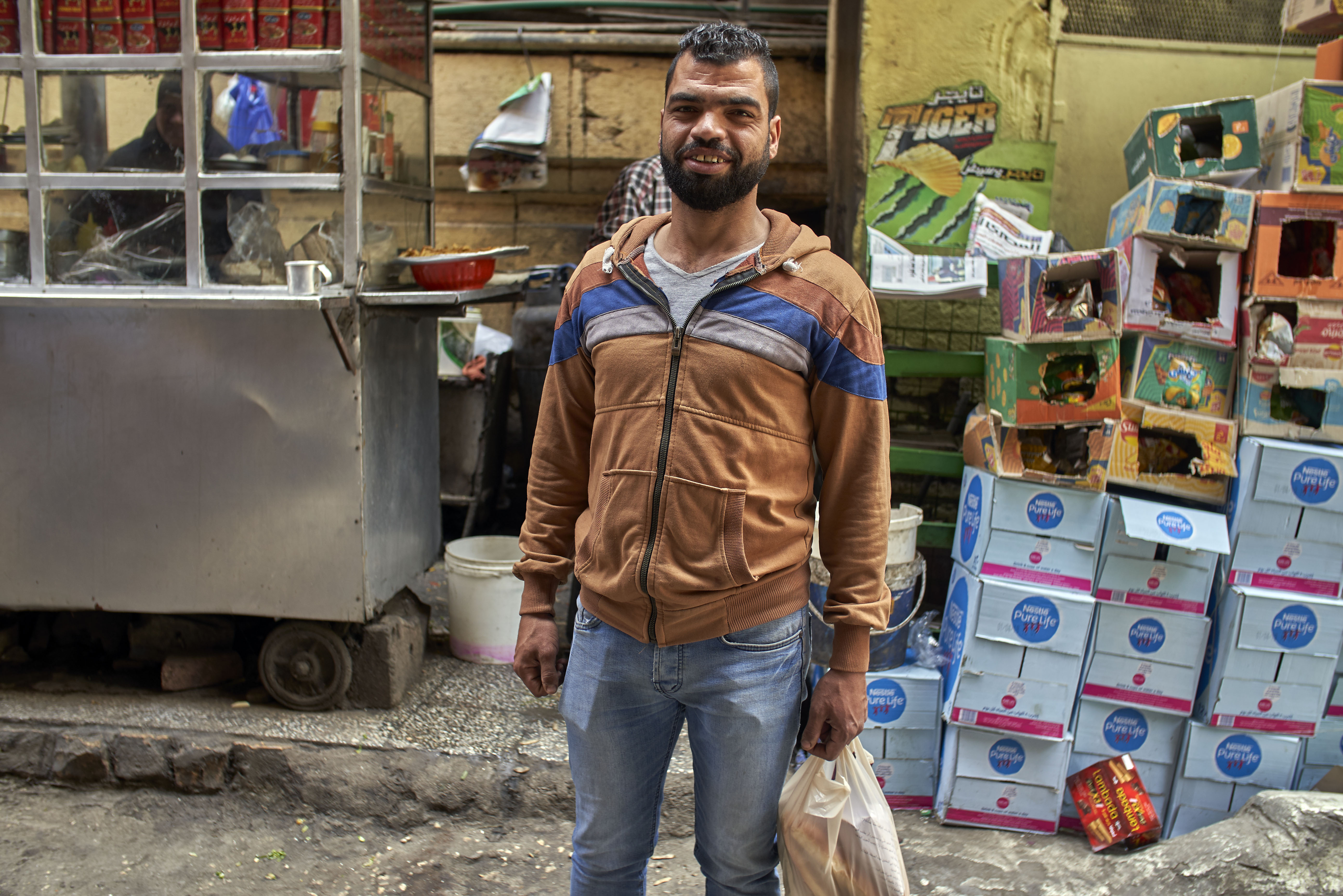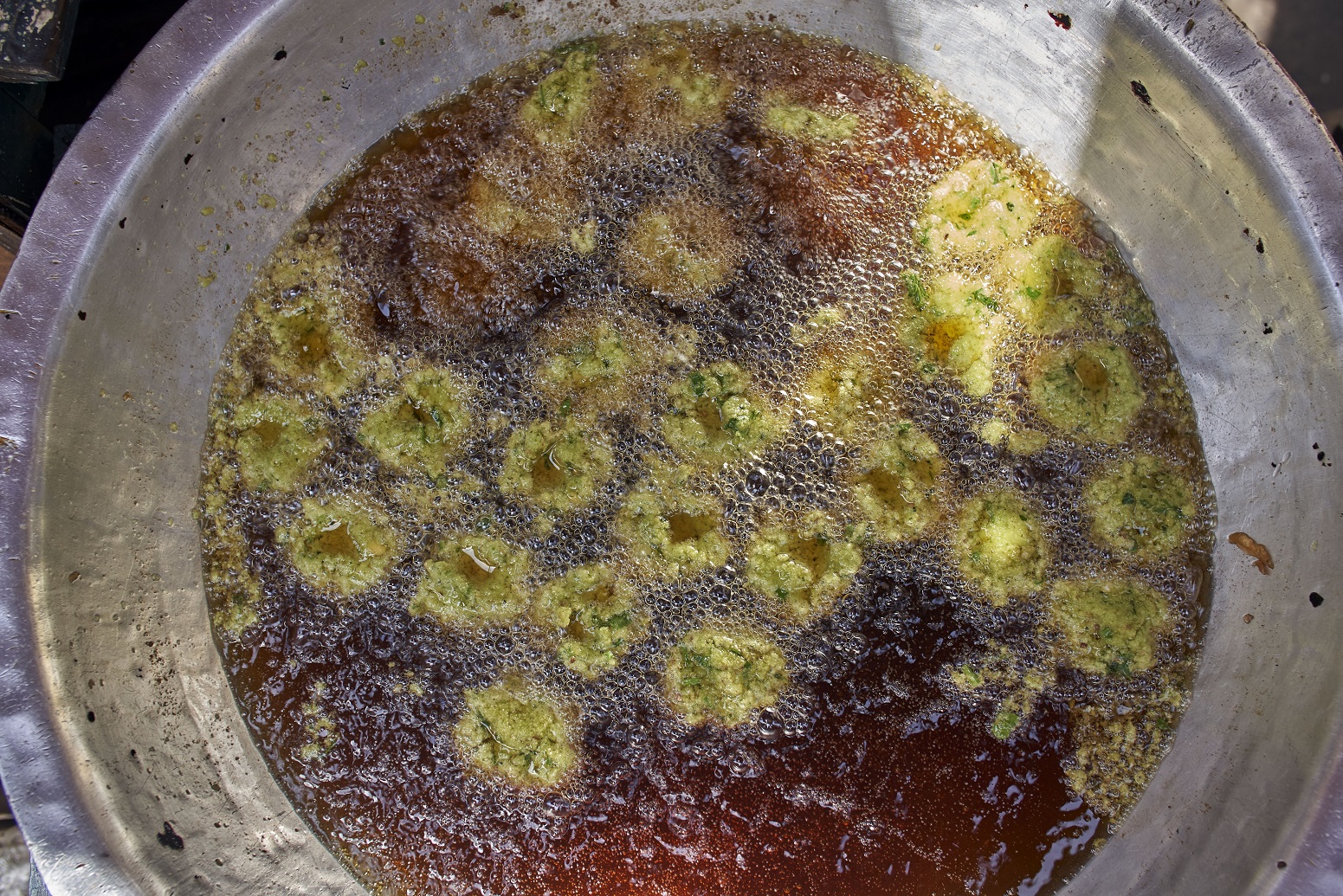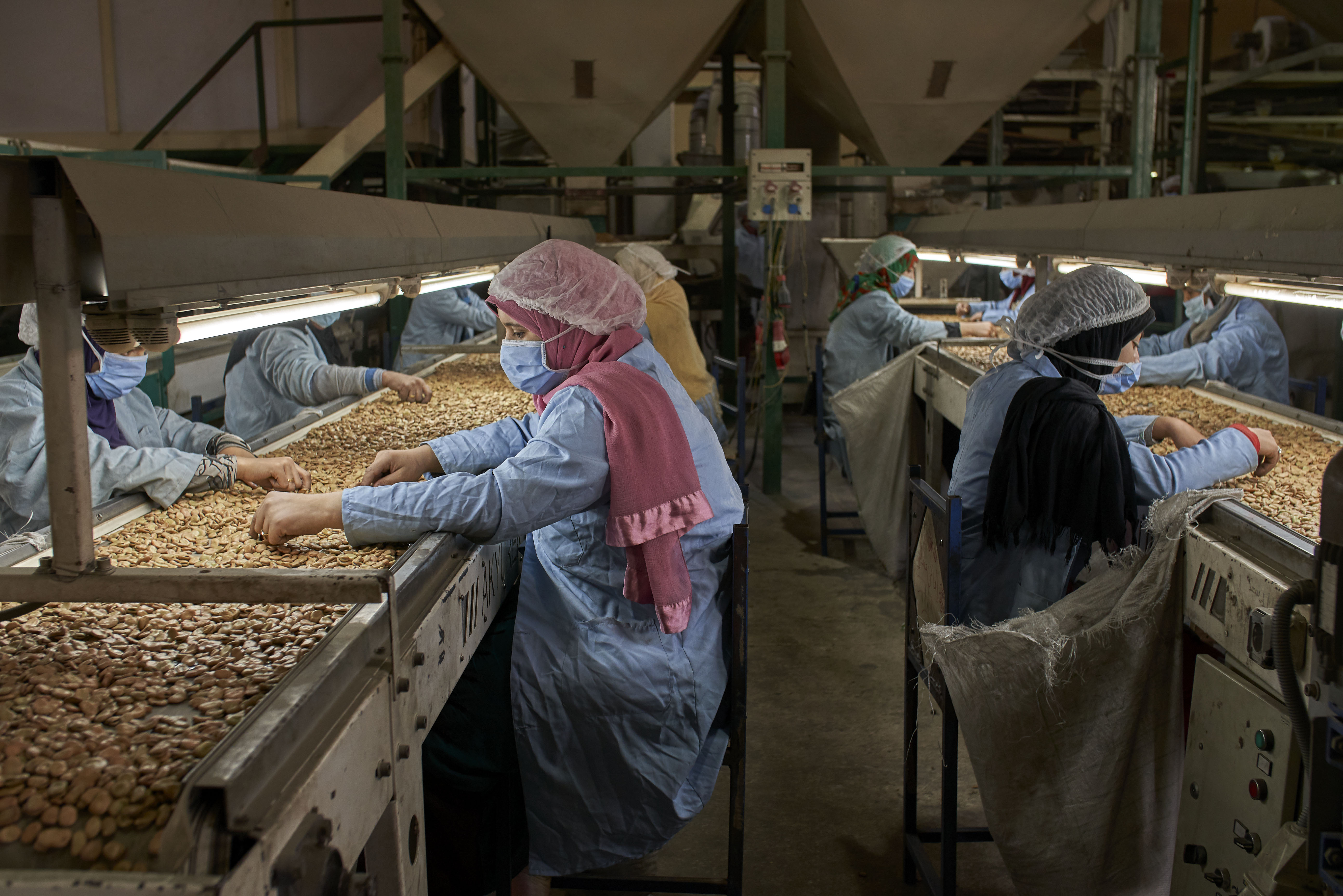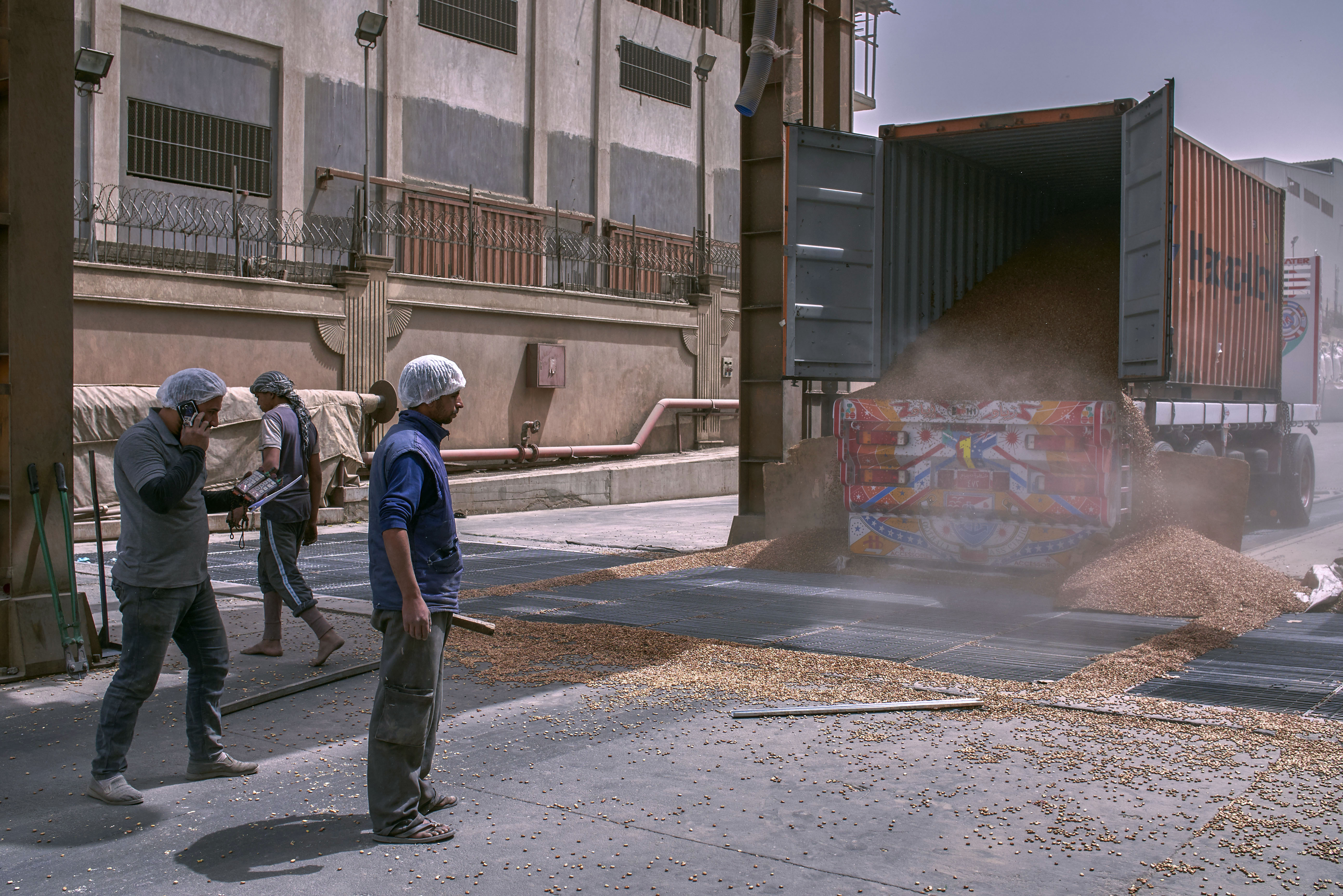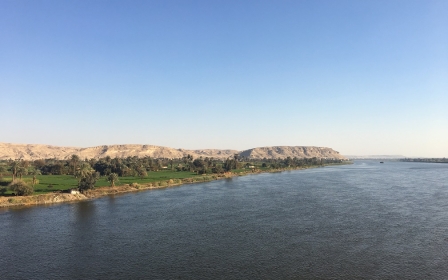Made in Egypt: Is 'the world’s greatest' falafel under threat?

It’s 11am on Abd Al Aziz Gaweash street in downtown Cairo.
Most of the shops are shut and the apartment buildings, united by their sandy-brown hues, show few signs of life.
Any time before midday is considered early for business here, but one street vendor is doing a roaring trade.
Sayed El Deeb has slicked-back hair, a smattering of stubble and a serious expression. He runs a hand through his light green falafel mix as he shares his secrets.
Stay informed with MEE's newsletters
Sign up to get the latest alerts, insights and analysis, starting with Turkey Unpacked
“We don’t add any bread or bicarbonates. Our secret is that we make it just like home cooking,” he says. “Making falafel has been our family business for about 50 years. My mother started it, then my sister, and when she passed away, I took over. I’ve been doing it for 12 years now.”
Falling into fava
Egyptians take their falafel seriously. Perhaps it’s because their version, known locally as taameya, is unlike any other. Here, the chickpeas so synonymous with the recipe are banished, and the fava bean reigns supreme.
Along with the standard onion and garlic, Egyptian falafel includes fresh produce such as parsley, coriander and even leeks, all of which combine to give a lighter, more aromatic take on the popular snack.
Maybe because I’m Egyptian, I would say our falafel has more flavour
- Moustafa El Refaey, chef
Despite being hailed by luminaries such as the Egyptian-born culinary anthropologist Claudia Roden as the best in the world, Egyptian falafel has largely gone under the radar.
Moustafa El Refaey is head chef at Zooba, one of Cairo’s best-loved restaurant chains, which sells high-grade takes on Egyptian street food.
“The herbs we use make it richer," he says. "There aren’t so many herbs in a Syrian or Lebanese falafel. If you open it, you will see it’s golden and light in colour, whereas ours is green.
"The Syrian falafel is quite dry and dense, versus the Egyptian one that is fluffier… Maybe because I’m Egyptian, I would say ours has more flavour."
The debates over falafel’s provenance and who can claim mastery of the recipe have been raging in this part of the world for years. Syria, Lebanon, Egypt and Palestine have all pleaded their cases, while Israel has also embraced – some would say appropriated – falafel to the point that it has become a key component of both the country’s national identity and its cuisine.
Nonetheless, many historians are beginning to place Egypt as the birthplace of the protein-packed snack.
In her book Falafel Nation: Cuisine and the Making of National Identity in Israel, New York University food studies professor Yael Raviv writes that “Falafel’s origins have been traced to the Christian Copts of Egypt, who were not allowed to eat meat during certain holidays, especially Lent. Taameya served as a meat substitute.
"When the dish later spread to other regions in the Middle East, the fava beans were sometimes replaced with chickpeas.”
The politics of food
There is considerably less doubt about Egypt’s status as embracer-in-chief of the fava bean. Traces of them are said to have been found in tombs dating to ancient Egypt’s 12th dynasty, which ran from 1985-1773 BCE, while others claim that paintings from ancient Egyptian times depict cooks making falafel.
According to Ken Albala, a food historian at California’s Pacific University and author of Beans: A History, there is “no doubt” that ordinary people were eating fava beans in ancient Egypt.
“Many of our neighbours use lots of chickpeas, but we use fava beans instead,” says El Refaey, who is also an ambassador for Egyptian cuisine history at the World Chefs Association.
“If you do anything here with chickpeas, it’s looked at as not Egyptian – it’s not necessarily bad or disliked, but it’s not ‘ours’… Here, everything with fava beans is ours and we’re proud of it. So there is a kind of nationalism over fava beans and foods made from them.”
Devotion
Back in downtown Cairo, down a small, shaded alleyway off Sherif Basha street, a brightly coloured banner encouraging people to vote in the upcoming constitutional referendum has been strung overhead. Beneath it, Mohamed Ismail has just bought some taameya from a metal cart that has been operating in the same spot for 48 years.
“I only eat Egyptian taameya,” he says. “I’ve never had Syrian or Lebanese taameya because the Egyptian one has lots of fresh vegetables and herbs, [so] it looks to me like it’s much tastier and healthier. Taameya is my life, I eat it for breakfast and dinner.”
The only other foods that inspire such cult-like devotion here are bread and ful medames – another fava-based recipe, in which the beans are steamed for more than 12 hours with garlic, olive oil, cumin and lemon juice.
Taameya is usually eaten for breakfast, though true disciples will eat it in the evening too.
Albala says that adopting fava beans as a staple makes a great deal of sense. “What’s cool about fava beans is that they have a large amount of protein but also a lot of starch, so they will mash very easily. They will also fry as they are, and they dry really well too. So there are lots of these considerations in why they became a staple,” he says.
“Fava beans provide protein that is, in combination with grains, giving great nutrition. It’s not a complete nutritional package, but you could live off of it. Just add some greens for vitamin A and a bit of dairy and you’ve got the whole lot.”
A precarious love affair
Given their links to the still-revered pharaonic period, Albala speculates that eating fava beans could even be seen as a conscious “expression of identity for modern Egyptians… a way to remember who they are”.
'Taameya is my life, I eat it for breakfast and dinner'
- Mohamed Ismail
This year, however, Egypt was given a reminder of just how precarious their love affair with the fava bean might be. The country currently consumes about 800,000 tonnes of the beans each year, but it grows just 50,000 to 100,000 tonnes, according to Mufaddal Saifuddin, director of Habba Habba, one of Egypt’s largest importers and processors of rice and pulses.
Australia and the UK are the biggest suppliers of beans with about a third each, with much of the rest coming from the Baltic states.
Saifuddin is guiding us around his factories on the outskirts of Cairo. Corridor walls are covered in photographs of taameya, lentil kofta and other ingenious ways of using beans and pulses. A lab is manned by technicians in white coats testing beans’ weight, moisture content, staining and other variables.
At the processing factory, a shipping container carrying 25 tonnes of fava beans is opened and millions of them pour out, rushing like a waterfall into a silo. Bean mist fills the air, hindering visibility in a fine layer of dust within seconds.
Whole fava beans currently cost EGP 14,000 ($814) to EGP 18,000 ($1,047) per tonne, compared to just EGP 9,000 ($523) to EGP 11,000 ($640) per tonne last year and the year before.
This is partly due to a shortage this year caused by crop issues in the UK, which resulted in a shortfall of about 150,000 tonnes. These issues were tempered by government intervention, along with some vendors substituting yellow split peas for fava beans in their taameya, according to Saifuddin – but the consumer was still affected.
Prices on the rise
“When a guy goes for breakfast with a budget of five Egyptian pounds, he cannot spend more than that, so he just has to eat something else. It might be an eggplant sandwich, or even just a packet of crisps and put it in some bread with a slice of cheese,” Saifuddin says.
Sayed El Deeb, the vendor on Abd Al Aziz Gaweash street, is well aware of the effects that the shortages and attendant price rises have had.
“Before, it was EGP four and then EGP 7.50 and now it’s EGP 18 per kilo [of fava beans]. It makes a lot of difference for the customer. I used to sell a sandwich for EGP two, now it’s EGP three, but that is very expensive for some people. Customers used to buy two or three sandwiches, now they are taking less,” he says.
So how did a country so utterly besotted by fava beans end up in a situation where it is importing almost 90 percent of its staple food? There are two main reasons: population growth and distribution of land. The Nile Delta once provided some of the world’s finest agricultural land, but it has become increasingly urbanised. Egypt’s fertile fields have been growing homes instead.
According to analysts, much of the problem stems from the land policies of President Abdel Nasser, still seen by many as the heroic architect of Egyptian independence, whose populist move to seize land from wealthy landowners and distribute it among the poor in the 1950s had a negative effect on the country’s agricultural industry.
'If you do anything here with chickpeas, it’s looked at as not Egyptian'
- Moustafa El Refaey, chef
What was once a 100-hectare plot, for example, might have been divided into 20 five-hectare plots. Not only did this reduce the country’s competitiveness in terms of economy of scale, the recipients of the land often did not have the know-how to tend it effectively and thus built on it instead as a means of extracting value.
Saifuddin thinks the price increases seen this year were a one-off and that Egypt’s fava bean supply is generally secure, though he does admit that any country importing so much of its food is “always at risk”.
What the future holds
Fluctuations beyond the importing country’s control, from currency and crop yield to weather, will remain a concern for nations that rely on imports.
Competitiveness looks like a further sticking point when the likes of Australia, Canada, the UK and other countries that grow fava beans have long been pouring millions into research and development, technology, infrastructure and general know-how. They now find themselves at a point where they have left traditional growers years, if not decades, behind.
El Refaey is certainly hoping that the price of fava beans stabilises in the near future. He hails the Egyptian ability to tighten belts and see out the most testing of circumstances, though he adds that one or two commodities need to remain off limits.
“Here in Egypt, don’t touch bread and don’t touch beans, the things we live on. Increase the meat, increase whatever you want, nobody cares – but if you touch the bread or the beans that will be…” he trails off. The Egyptian culinary ambassador seems unable to contemplate what might happen if his countrymen are denied the chance to eat their taameya.
This article is available in French on Middle East Eye French edition.
Middle East Eye delivers independent and unrivalled coverage and analysis of the Middle East, North Africa and beyond. To learn more about republishing this content and the associated fees, please fill out this form. More about MEE can be found here.




